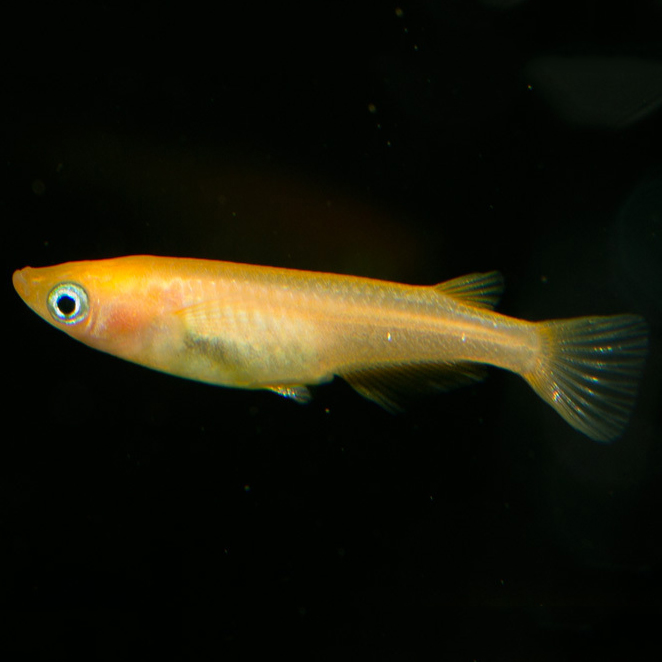Medaka Orange
Oryzias latipes
The Medaka Orange is a pretty, intensely colored rice fish.
- bright yellow-orange colored
- easy to care for and robust
- also suitable for keeping in ponds
1 in stock
 Delivery in a few working days
Delivery in a few working days
 Free shipping from €60 across Austria
Free shipping from €60 across Austria





Important data
Product description & details
The Medaka Orange is a rice fish of the genus Oryzias, which comes from Southeast Asia and whose distribution area extends from Laos, China and Korea to Japan. Its natural habitat is mainly slow-flowing to stagnant bodies of water such as rice fields or ponds. It occurs in both freshwater and brackish water. The Medaka rice fish, which is particularly popular in Japan, is now available in hundreds of breeding lines. In the breeding variant “Orange” it has a bright yellow-orange body color, which forms a beautiful contrast to the blue iridescent eyes.
Care in the aquarium
It is possible to keep the Medaka Orange in an aquarium from 60 liters, but is recommended for 80 liters or more. The aquarium should have dense vegetation around the edges, which still gives this lively fish enough swimming space. Subdued lighting and a dark substrate not only ensure that the rice fish feels safe, but also bring out the great coloring particularly well. As a schooling fish, it should also be kept with at least 10 members of its species. It is important to have clean and well-filtered aquarium water. However, in terms of other water parameters, the Medaka Orange can adapt to a wide range and is even well suited to cold water. Soft to relatively hard water with a temperature between 10 and 28°C is tolerated very well.
Feeding
As an omnivore, the Medaka Orange is not particularly picky, but in nature it feeds mainly on small insects and their larvae as well as other aquatic animals. Frozen and live foods such as artemia, mosquito larvae or daphnia are preferred, but commercial fish food is also accepted. Above all, a varied diet is optimal.
Sexual characteristics and breeding
In Oryzias latipes, the genders can be distinguished primarily based on the fins and peritoneum. Males have elongated dorsal and anal fin rays, while the rays of the pectoral fins are often elongated in females. The peritoneum in males is smaller and triangular in shape, while in females it has a more rectangular shape. Breeding Medaka Orange in an aquarium is not too difficult and can be done relatively quickly, as the animals reach sexual maturity at around 2-3 months. The females carry the fertilized eggs visibly behind the anal fin, where they adhere to the mother with the help of barbs until, after a few hours, the mother strips them off, preferably on fine-feathered plants. There is no brood care and there is a risk that the parents will eat their own eggs, which is why a separate breeding tank should be available if you want to raise as many offspring as possible. The young fish, which hatch after about 2 weeks, can be fed with dust food and infusoria and later with copepods and Artemia nauplii.





